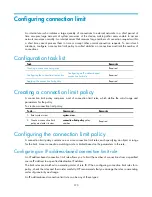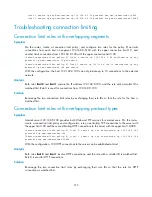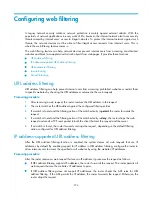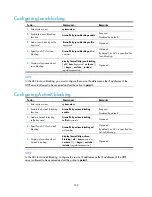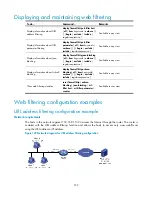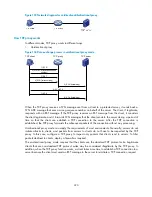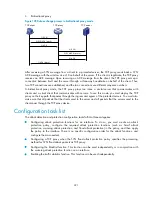
384
Solution
Make sure that all entered characters are valid.
Invalid use of wildcard
Symptom
When you configure a URL address filtering entry or URL parameter filtering entry, the system prompts
you that the wildcards are not used correctly.
Analysis
The wildcards for URL address filtering entries and those for URL parameter filtering entries have different
usage restrictions.
Table 11
Wildcards for URL address filtering entries
Wildcard Meaning Usage guidelines
^
Matches website addresses
starting with the keyword
It can be present once at the beginning of a filtering
entry.
$
Matches website addresses
ending with the keyword
It can be present once at the end of a filtering entry.
&
Stands for a valid character
other than a dot (.)
It can be present multiple times at any position of a
filtering entry, consecutively or inconsecutively, but
cannot be used together with an asterisk (*).
*
Stands for any number of valid
characters and spaces excluding
a dot (.)
It can be present once at the beginning or in the middle
of a filtering entry. It cannot be at the end and cannot
be used next to
^
or
$
.
Table 12
Wildcards for URL parameter filtering entries
Wildcard Meaning Usage guidelines
^
Matches parameters starting with
the keyword
Can be present once at the beginning of a filtering entry.
$
Matches parameters ending with
the keyword
It can be present once at the end of a filtering entry.
&
Stands for one valid character
It can be present multiple times at any position of a
filtering entry, consecutively or inconsecutively, and
cannot be used next to an asterisk (*). If it is present at
the beginning or end of a filtering entry, it must be next
to
^
or
$
.
*
Stands for a string of up to 4
valid characters, including
spaces
It can be present once in the middle of a filtering entry.
Solution
Use the wildcards correctly according to the above principles.

